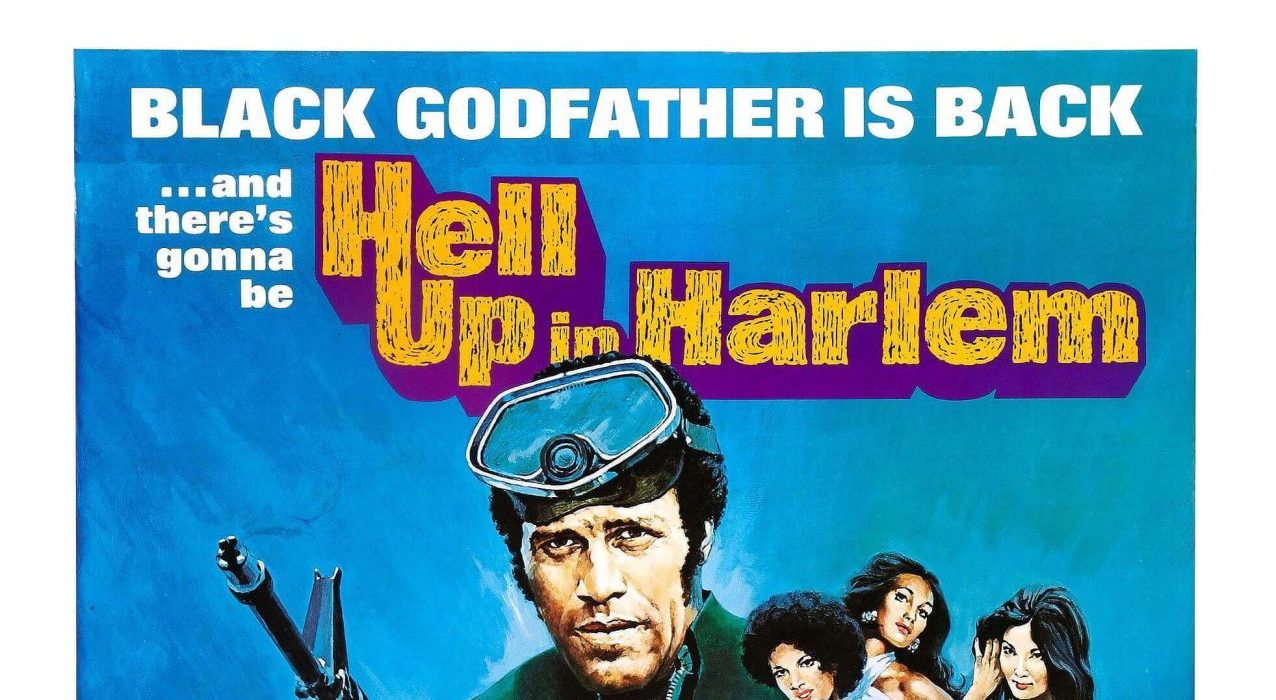Starring: Fred Williamson, Julius Harris, Tony King and Margaret Avery
Rated: R Action/Crime/Drama
Following up Black Caesar, Hell Up in Harlem continues tracking the ascension, and possible downfall, of Black crime boss, Tommy Gibbs (Fred Williamson).
The story opens with Gibbs, who has been critically wounded on the streets of Manhattan. He seeks aid from his men, who are ably led by his right-hand man, Zach (Tony King). One of the most memorable scenes in Black cinema occurs with the Gibbs organization’s hostile takeover of Harlem Hospital. Zach’s crew forced the physicians to perform emergency surgery or be killed; it is a tense opening. This tension continues throughout the film, taking the viewer across country, from the streets of Harlem to the suburbs of Los Angeles …
As Tommy is sequestered in hiding in order to recover, his estranged father, Papa Gibbs (Julius Harris) and Zach work to enact Tommy’s plans to destroy the crooked district attorney, Mr. DiAngelo (Gerald Gordon). Mr. DiAngelo wanted to imprison the Gibbs men, in hopes that he, in collusion with his Mafia connections, could monopolize the drug trade in Harlem.
With his father, lead henchman, Zach, and a new love, Sister Jennifer (Margaret Avery) by his side, Tommy Gibbs has everything he needs to exact revenge on the crooked DiAngelo and the Italian mobsters who attempted to murder him. He is determined to resume his position on top … but can he? And at what costs?
Hell Up in Harlem was released in December 1973, just ten months after Black Caesar. Like its predecessor, Hell Up in Harlem was written, directed and produced by Larry Cohen. In an interview, “Camera Q & A: Larry Cohen on His Films with Fred Williamson” featured in the Camera in the Sun, Cohen shares how the follow-up film came into being. Because Black Caesar did so well, he was immediately approached by American International Pictures to create a sequel. The urgency was immediate, as the motion picture company wanted to avoid the possibility of actors requesting pay increases because of the first film’s great success. Cohen said he did not have a script written but figured he would make up the film as he went along … and he did.
Aside from being unprepared for how well Black Caesar would do, both Cohen and Williamson were already committed to working on other projects: Cohen was shooting It’s Alive for Warner Brothers and Williamson was acting in That Man, Bolt for Universal. After discussing their predicament, Cohen and Williamson agreed they would film Hell Up in Harlem on the weekends. Assisted by the same gangsters in Harlem who “helped” them previously in Black Caesar, Cohen was able to shoot most of the film primarily in New York. Much of Fred Williamson’s work, however, had to be completed in Los Angeles, where he was filming. Thus, a body double for Williamson was used in many of the scenes completed in Harlem.
In that same interview, Cohen exclaimed, “Anyway, we shot most of the stuff in New York with the double, and then we came and shot the reverses back in California. I knew exactly what angles I needed, what shots I needed, what cuts I needed. So, I had it all in my head, and I could do it. Probably no one else could have done it. But I was able to pull it off, because I was writing the script as I was going along, and I knew exactly where I needed to put Fred in the scenes. So, we shot in Harlem. We shot in Harlem Hospital. We shot in a coal yard up in Harlem. We shot over there by the East River under a railroad bridge. We shot on 125th, and all around the key places, and torn-down buildings, and wreckage of buildings. We went back to where we had shot the ending of the first picture, and picked it up from there with the double — and then we put Fred in. So, it’s interesting to watch the picture to see where Fred is, and where the double is. To this day, Fred claims he was in scenes he wasn’t in. It even fooled him. But one of the kicks of the whole thing was to be able to finesse this thing so that you create something that was never really there. In the eyes of the audience, they see something that didn’t really exist, but you made it exist on film.”
The soundtrack of Hell Up in Harlem, recorded by Edwin Starr, featured the title track, “Big Papa” and “Easin’ In”. This would be the last album Starr recorded with Motown; perhaps that explains why the recording company poorly promoted the LP. Like the soundtrack to Black Caesar, this soundtrack would later be sampled by hip-hop artists, including RZA, Dilated Peoples, Prodigy, Digable Planets, The Dogg Pound and DMX.

